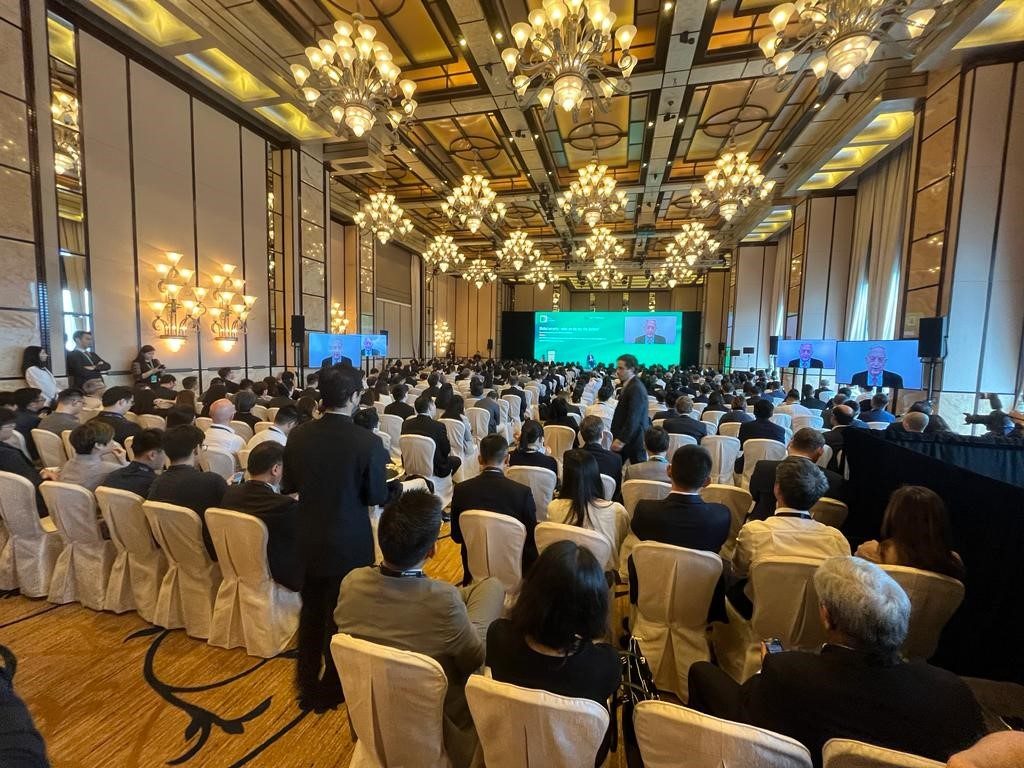In 2021, upward inflationary pressure was often dismissed as a transitionary phenomenon that would fade away over time. Two years later, and rising prices remain the focal point of macroeconomic discussions across the world, with investors eager for monetary policy to get inflation back within target levels.
At the BNP Paribas Global Markets APAC Conference 2023, held in Hong Kong in September, two of the century’s most celebrated central bankers shared their views on what central banks will do next, as well as economic outlooks for two of the world’s most important economies – Japan and the US.
Understanding US inflation
The key topic for the US economy is the rate that it is cooling, and whether the Federal Reserve can stop, or even reverse, its aggressive hiking of the policy rate. Inflation in the US is trending lower, and there are signs of some slack in the local labour market, which has been extremely tight in recent years. Another factor that relieves inflationary pressure is the easing of supply chain issues that arose during the pandemic.
All these developments suggest that the Fed could be in a position to become more dovish. But a pressing question is whether these developments are happening fast enough, or whether expectations for higher inflation will become entrenched among the broader public.
Once that happens, inflationary pressure will start to affect wage negotiations, and price rises can get a life of their own. This is why central bankers are concerned about persistent inflation, and are working hard to nip it in the bud.
The post-pandemic labour market in the US is perhaps the most important factor in policymaker decisions. The number of available jobs has been much higher than the amount of unemployed workers, making it harder for employers to find new people.

❝ There is need for central bankers to conduct monetary policy with humility in light of the heightened uncertainty. And until there is conclusive evidence of labour market weakening, policy rates could stay higher for longer. ❞
That said, the complex string of disruptive events makes it hard to measure what is going on in the economy and forecast how policy will affect inflation and other indicators.
But if the labour market continues to loosen, there will be knock-on effects in the housing market, as high interest rates will cause more people to sell their houses. The overall effect should be the kind of cooling in the economy that calms inflation.
For example, the pandemic has changed the make-up of participants seen in the labour force, while transforming work practices. The Ukraine war was an unexpected event that renewed concerns about global supply chains. As a result, the conference heard that central bankers need to acknowledge in their policymaking the high levels of uncertainty they currently face.
“There is need for central bankers to conduct monetary policy with humility in light of the heightened uncertainty. And until there is conclusive evidence of labour market weakening, policy rates could stay higher for longer,” said Luigi Speranza, Global Head of Markets 360 and Chief Economist, BNP Paribas.
A turning point for Japan
In Japan, discussions of inflation are very different to the rest of the world, as rising prices are desirable in the world’s third-largest economy.
With the average inflation rate in Japan at 2.7% so far in 2023, there are rising hopes that the country has turned a corner on the deflation that weighed down economic sentiment in recent decades. Persistent inflation could lead to a period of modest growth over the medium term, which will allow the central bank to gradually start normalising policy – a process that could take several years.
Inflation in Japan is unlike inflation in Europe and the US, which has been driven by elevated input prices, that are already declining. Japan’s economy is growing, corporate profits are at historic highs, and the labour market is tight, with wage increases next year likely to be as robust as this year.
Speakers identified more trends that could strengthen Japan’s positive economic outlook. Foreign investment is strong, as geopolitical tensions between China and the US are seeing more capital directed towards Japan.
The country also has a central place in many of the new trade agreements that have launched in recent years – such as the Comprehensive and Progressive Agreement for Trans-Pacific Partnership (CPTPP) and the Regional Comprehensive Economic Partnership (RCEP).

❝ With the Japanese economy at a turning point, an optimistic case can be made that the sun will keep rising over Japan. ❞
There are potential challenges to this story. Shifting demographics will lead to a continuous decline in the workforce, increasing the need for investment in labour-saving technology and more immigration.
Another issue is Japan’s banking system, which is extremely well capitalised, but also risk averse. This could limit the quantity of financing available to the country’s entrepreneurs, and hinder investment in important sectors, such as businesses that will address climate change. But overall, the case for Japan is optimistic.
“With the Japanese economy at a turning point, an optimistic case can be made that the sun will keep rising over Japan,” said Mana Nakazora, Chief Credit Strategist, Chief ESG Strategist, Vice Chairperson Global Markets, BNP Paribas Japan.

